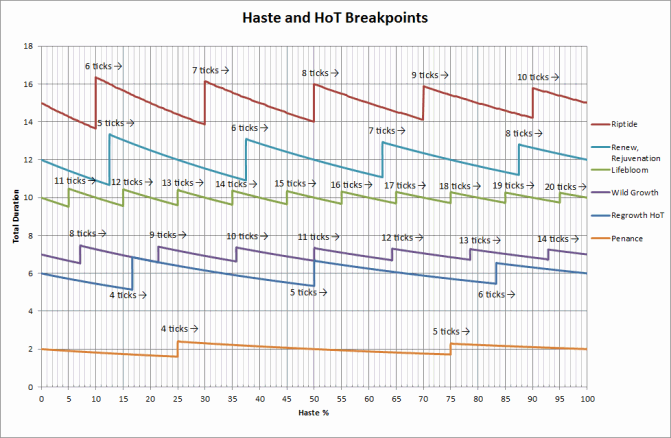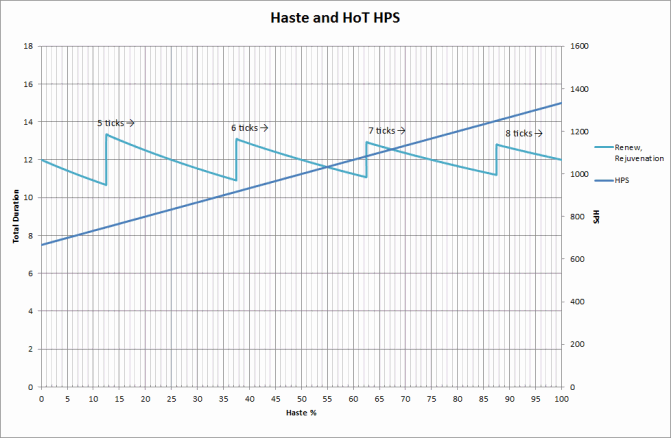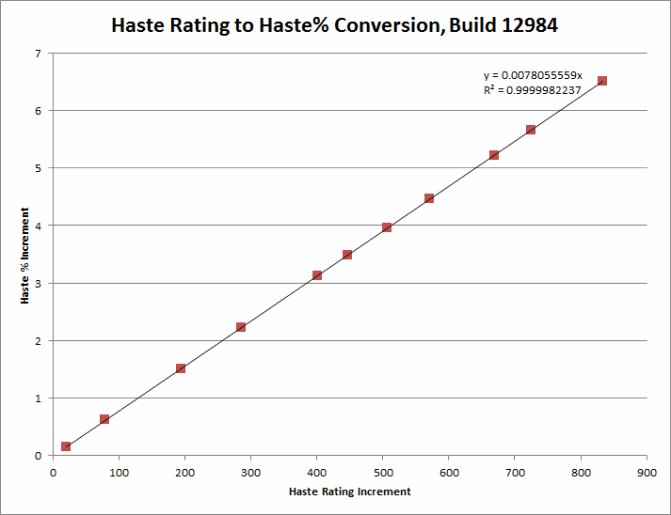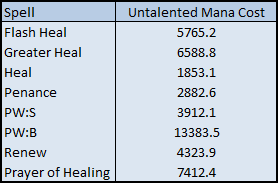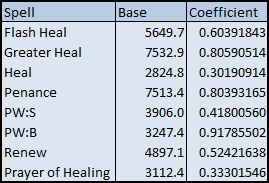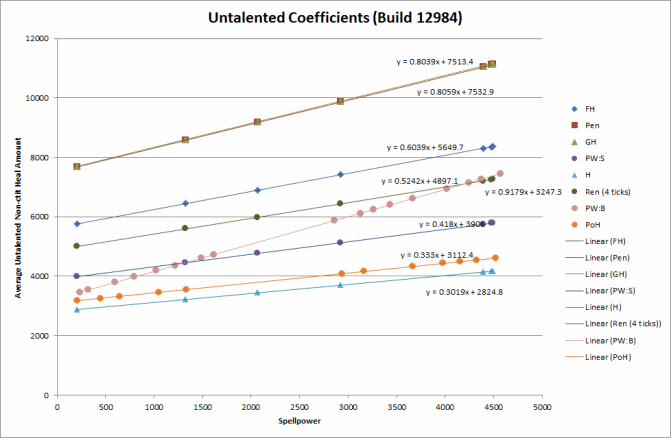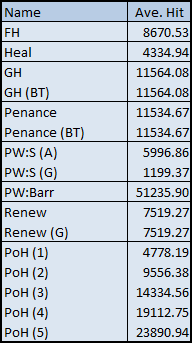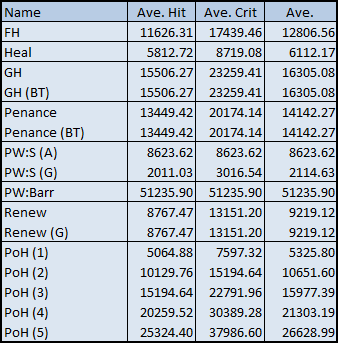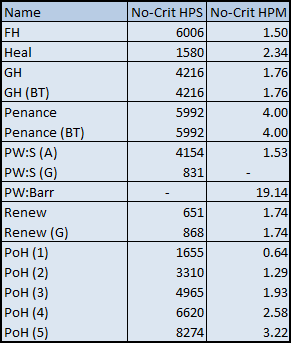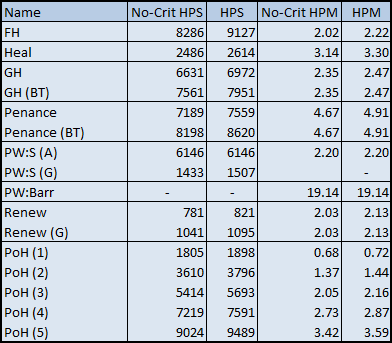
4.1 is upon us, so here’s a quick guide to how it will affect you as a raiding Disc Priest. (This is by no means exhaustive and I reserve the right to edit it over the coming days).
Discipline Highlights
Divine Aegis duration has been increased to 15 seconds, up from 12.
Power Word: Shield duration has been reduced to 15 seconds, down from 30.
This pair of changes is intended to limit any temptation Disc Priests might feel to drift back to bubble-spamming again, particularly as gear levels and therefore mana regeneration improves. The change to PW:S’s duration should be something that most Priests won’t really notice, since I doubt many of us were blanketing the raid before this change.
The DA change is a nice improvement though. In 25-man raids there are a few occasions where maintaining DA on all 5 groups was useful, and a 12s duration made that difficult/impossible. For example, on Atramedes you could rotate PoH across each group to heal them up after Modulation and put up a protective DA bubble for the next one, this extra time allows you room to refresh it on the first groups with a follow-up PoH.
Power Word: Barrier’s cooldown has been increased to 3 minutes, up from 2, and its effect has been reduced to 25%, down from 30%.
Blacksen did a really in-depth write-up of the changes to the cooldowns across the classes that are in 4.1, so I’d direct you there if you’re interested.
The changes to PW:B (and Divine Guardian) seem intended to bring all the main cooldowns into line with each other, setting 3 minutes as the standard duration and presumably bringing the effectiveness in line as well. This probably has advantages both in terms of encounter design (where the number and strength of available cooldowns per minute is better-known to the developers, boss specials can be better-designed around this figure) and in terms of raid balance (when every cooldown is on the same interval and has approximately the same effectiveness, that removes one reason for picking one class over another).
As a Disc Priest I’m obviously slightly disappointed to be nerfed, but the change from 30% to 25% isn’t game-breaking and if that’s what it takes to better balance the raid cooldowns then I’ll trust Blizzard’s judgement on this one.
Holy Fire damage has been increased to be approximately 30% higher than Smite.
Atonement now works with Holy Fire in addition to Smite.
The direct damage portion of Holy Fire can now trigger Evangelism.
Glyph of Divine Accuracy now also affects Holy Fire in addition to Smite.
A whole raft of changes to the Atonement/Archangel/Evangelism healing style here.
The short version is that Atonement and Evangelism have been changed to incorporate Holy Fire as well as Smite: HF will heal with Atonement and the initial hit will also add a stack of Evangelism. To help facilitate this, the change to the Glyph of Divine Accuracy removes the annoying risk of wasted time (and possibly a dead tank) due to a missed HF.
These changes mean that HF should be an integral part of the AAE rotation again. The bump to the output of Holy Fire is a straight throughput increase for the rotation, and of course now that we’re casting HF routinely and without penalty the Glyph of Smite reprises its place amongst our Major Glyphs, for another flat 20% increase to the output of the AAE style.
Of course, the AAE approach still isn’t as predictable as directly healing your target when there’s multiple possible targets for the Atonement heal to land on, but where it is usable you should see significantly improved results. As an enthusiastic supporter of the AAE spec I’m rather pleased about the output buff as well as being encouraged to add an extra spell to the rotation.
The Rest
Dispel Magic can only be used on the casting priest as a baseline effect.
Discipline and Holy: Absolution (new passive) enables priests to use Dispel Magic on up to 2 harmful effects on friendly targets.
This change shouldn’t make any difference to Discipline or Holy specced Priests, but if you’re accustomed to having your Shadow brethren help with dispels in a pinch then you’ll need to rethink that from now on.
Note that this doesn’t affect our ability to offensively Dispel, regardless of spec. Not a surprise there, it wouldn’t be in keeping with Blizzard’s current direction if they narrowed the number of range of specs with offensive Dispels.
Inner Will and Inner Fire now last until canceled.
A nice quality of life change here.
OK, it’s not the biggest deal, but it’s technically a buff!
Priests now innately have 100% pushback protection from damage while channeling Divine Hymn and Hymn of Hope.
This is a much bigger deal. Even if you bubbled yourself just before starting the channel this would often not be enough to get you through without losing at least one tick of the channels, and particularly in the case of Divine Hymn this could cost a significant chunk of healing when you need it most.
As with the other raid cooldown changes I see this as a measure to normalise the effect, making it more predictable and thus better-balanced and easier to design around.
It is now possible to remove Weakened Soul effects that were a result of another priest’s Power Word: Shield through Strength of Soul.
I suppose if you had multiple Disc Priests in raids, or a particularly bubble-happy Holy Priest, this could be helpful. It’s a nice, sensible change anyway.
Mind Sear damage has been doubled.
When you have a burning desire to break the CC on those tricky trash pulls, now you can do it slightly harder 😉
Other Healers
Druid: Efflorescence has been redesigned. It creates a healing zone at the feet of a Swiftmend target, but this healing zone now restores health equal to 4/8/12% of the amount healed by Swiftmend to the three most injured targets within 8 yards, every 1 second for 7 seconds. This periodic effect now also benefits from spell haste, but the individual ticks cannot be critical effects.
In case you’d missed the memo, this is a buff to Efflorescence overall, making it like a much lighter, area-limited version of Divine Hymn. However, from our perspective as a non-Druid, we need to be aware of this change. When there are a lot of players inside the Efflorescence zone, the new version will bring up the lowest health bars but leave the higher ones alone, while the previous incarnation would have brought everyone up equally.
When it’s important to top off the group (before an Electrocute, for example), you might be better off focusing on the groups and players with the smallest health deficits rather than those most injured, since you’re now competing with yet another smart heal on the most injured players.
Shaman: Spirit Link Totem (new talent) reduces damage taken by all party and raid members within 10 yards by 10%. This lasts 6 seconds, and every second it is active the health of all affected players is redistributed among them, such that each player ends up with the same percentage of their maximum health. This counts as an Air totem and has a 3-minute cooldown.
This new raid cooldown is going to prove very interesting; Again, I’m going to refer you over to Blacksen’s End for a very detailed write-up with examples.
Spirit Link Totem is a sort of combination of PW:B and Divine Hymn, in that it both reduces damage taken and helps rescue people from the brink of death. The value of the totem very strongly depends on the nature of the damage being taken. Consider the following examples:
- Chimaeron’s Feud Phase – If you use it on the raid, Spirit Link Totem is essentially reduced to a 10% damage reduction here; everyone is taking similar damage and therefore their health pools will all be roughly even, leaving little room for health redistribution.
- Omnotron Defense System (Arcanotron) – In this case the damage from Arcane Annihilator is focused on 3 people (on 25-man) at a time, so Spirit Link Totem looks like a great tool to bring their health back up by taking a small amount from the health bars of everyone around them. However the spread-out nature of the fight, combined with the relatively small 10-yard range of the Totem, means that the effectiveness is significantly reduced.
- Cho’gall – Whenever Cho’gall has Flame’s Orders or high stacks of Twisted Devotion the tank will be taking unusually high damage while the raid will not. Under these circumstances, where the Totem has time for its redistribution effect to work, this can significantly reduce the net damage the tank takes by effectively spreading it out across the melee/raid.
You might also be able to use this to good effect in the final phase if the redistribution is not affected by the healing reduction of the tentacles; I’ve not tested to see if this is the case, but if so, it opens up some interesting possibilities.
Warrior: Rallying Cry (new ability) is available from trainers at level 83. It temporarily grants the warrior and all party or raid members within 30 yards 20% of maximum health for 10 seconds. After the effect expires, the health is lost. It has no cost, no stance requirements, and is not on the global cooldown. It has a 3-minute cooldown, but also shares a cooldown with Last Stand.
You’d be well-advised to keep your eyes peeled for this one, to make sure that when it ends everyone is over 20% HP. It could be very handy, for example, on Chimaeron if the raid is in danger of dying during the Feud, or on Chimaeron Heroic to extend the final phase for a few seconds longer if people are in danger of dying to the soft enrage (Mocking Shadows) as you might be on your early attempts.
General Changes
The Dungeon Finder: Call to Arms will now identify which class role is currently the least represented in the queue, and offer them additional rewards for entering the Dungeon Finder queue and completing a random level-85 Heroic dungeon.
The least represented class icon will show within the Dungeon Finder to indicate the role that is eligible to earn the bonus reward.
Players must queue solo with the currently indicated least represented class (by the system) and complete the dungeon up to and including the final boss in order to be eligible for the bonus reward [… which may include]: gold, rare gems, non-combat pets, and (very rare) mounts.
While most of the shortages these days tend to be tank shortages, it’s quite possible that we’ll find healers in demand from time to time. It’s also possible (at least it was on the PTR) to have more than one Call to Arms active at the same time, depending on how the thresholds are set up we might see a healing Call to Arms fairly often or very rarely indeed; only time will tell.
A dead player can now be resurrected by targeting them using the Party or Raid Frame even if they have released. No more hunting for corpses.
About time too. I wonder if this will also fix the problem of someone releasing during a resurrection cast.
Conquest Points are now purchasable from the Valor Quartermasters at 250 Conquest Points per 250 Valor Points.
Honor Points are now purchasable from the Justice Trade Goods vendors at 250 Honor Points per 375 Justice Points.
Justice Points are now purchasable from the Honor Trade Goods vendors at 250 Justice Points per 375 Honor Points.
If you’re gearing a new toon then being able to spend some time in PvP and translate that time into PvE points, albeit at a 50% mark-up, could prove quite appealing. Similarly, another outlet to bleed off excess Justice points, this time into Honor points to build up a PvP set, is a welcome addition.





